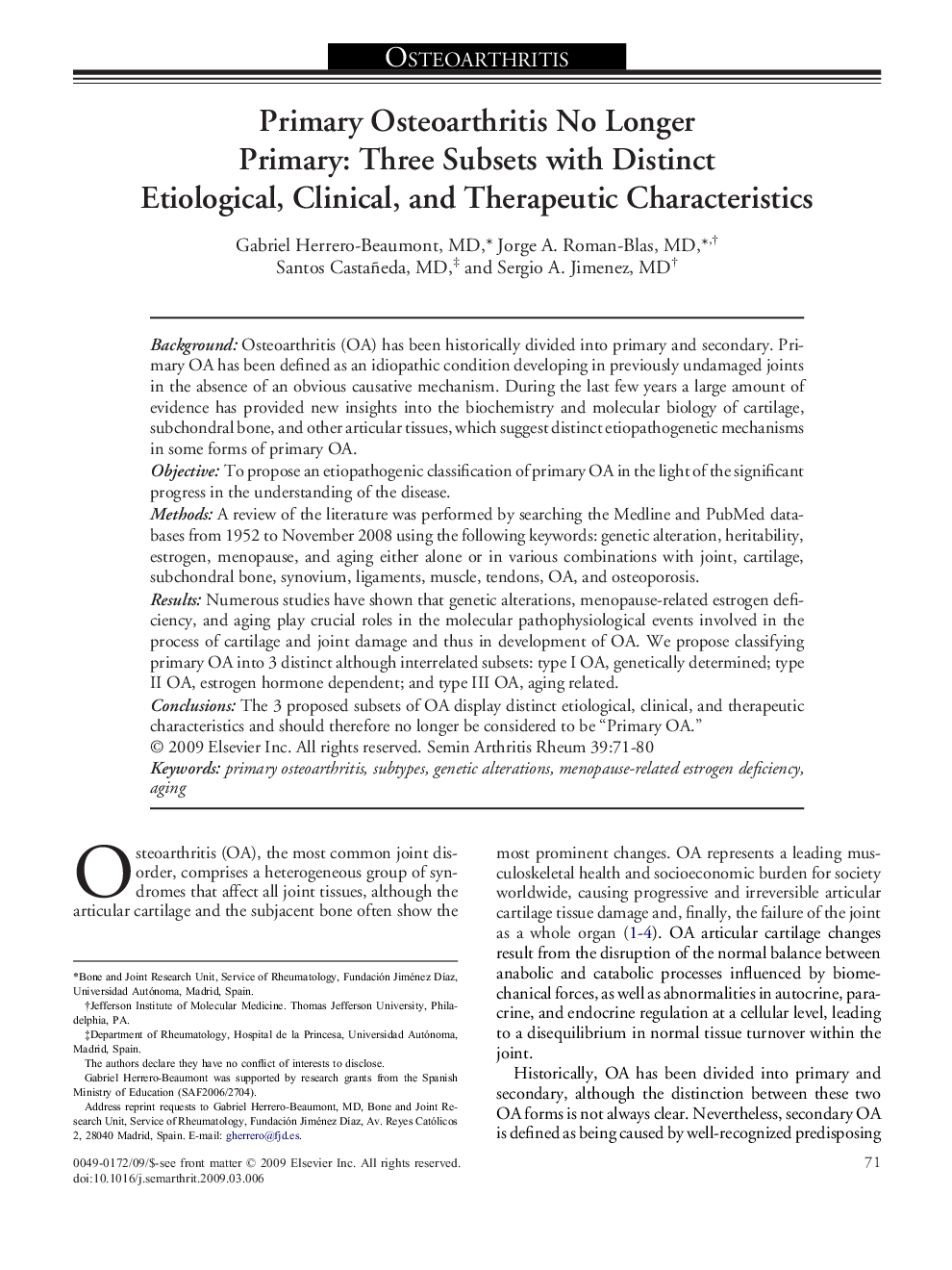| Article ID | Journal | Published Year | Pages | File Type |
|---|---|---|---|---|
| 2771709 | Seminars in Arthritis and Rheumatism | 2009 | 10 Pages |
BackgroundOsteoarthritis (OA) has been historically divided into primary and secondary. Primary OA has been defined as an idiopathic condition developing in previously undamaged joints in the absence of an obvious causative mechanism. During the last few years a large amount of evidence has provided new insights into the biochemistry and molecular biology of cartilage, subchondral bone, and other articular tissues, which suggest distinct etiopathogenetic mechanisms in some forms of primary OA.ObjectiveTo propose an etiopathogenic classification of primary OA in the light of the significant progress in the understanding of the disease.MethodsA review of the literature was performed by searching the Medline and PubMed databases from 1952 to November 2008 using the following keywords: genetic alteration, heritability, estrogen, menopause, and aging either alone or in various combinations with joint, cartilage, subchondral bone, synovium, ligaments, muscle, tendons, OA, and osteoporosis.ResultsNumerous studies have shown that genetic alterations, menopause-related estrogen deficiency, and aging play crucial roles in the molecular pathophysiological events involved in the process of cartilage and joint damage and thus in development of OA. We propose classifying primary OA into 3 distinct although interrelated subsets: type I OA, genetically determined; type II OA, estrogen hormone dependent; and type III OA, aging related.ConclusionsThe 3 proposed subsets of OA display distinct etiological, clinical, and therapeutic characteristics and should therefore no longer be considered to be “Primary OA.”
